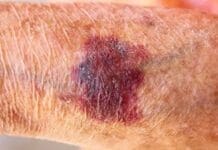By Ruth Corley, Bay County Sheriff’s Office
A lifeline is defined as a thing on which someone depends, something which provides a means of escape from a difficult situation. Inside the Bay County Jail, the Lifeline Drug Treatment Program, a 120-day substance abuse behavioral modification program, offers a means of escape and hope to those inmates ensnared by addiction.
 Lifeline began nine years ago inside the jail and it has been successful; but two years ago Sheriff Tommy Ford realized that the structured physical, emotional, and spiritual fitness plan he was providing for his employees could, with a few modifications, be just as effective at empowering inmates battling opioid addiction. The program already in place at the BCSO, was called Mission Based Resilience and it was designed and being taught by former Navy SEAL Dr. Ed Naggiar.
Lifeline began nine years ago inside the jail and it has been successful; but two years ago Sheriff Tommy Ford realized that the structured physical, emotional, and spiritual fitness plan he was providing for his employees could, with a few modifications, be just as effective at empowering inmates battling opioid addiction. The program already in place at the BCSO, was called Mission Based Resilience and it was designed and being taught by former Navy SEAL Dr. Ed Naggiar.
Dr. Naggiar holds a PhD in Industrial/Organizational Psychology, with expertise in performance under stress in extreme conditions. Dr. Naggiar had a 20-year career as a U.S. Navy SEAL Officer, often volunteering as a human experimental test subject to test the limits of human performance in extreme environments, before founding the company Human Performance Consulting, LLC.
Naggiar is a familiar face at the Bay County Sheriff’s Office, as he has been training groups of employees to develop strategies for not only physical strengthening, but emotional and spiritual resilience as well. Seeing the plan help employees cope with the stresses inherent with a career in law enforcement, Sherriff Ford was certain that learning to handle stress and develop successful coping strategies could help addicts, as well, especially the increasing numbers of opioid-addicted inmates housed in the Bay County Jail.
Now an integrated member of the Lifeline team, Dr. Naggiar’s Mission Based Resilience portion of the Lifeline program consists of a class of 15 carefully screened men that meet for seven weeks, three days each week. They spend one hour in the class followed by an hour outside completing exercises that apply the principles they learn in the classroom. The curriculum is about 20% physical fitness and 80% psychologically based.
Even after having conducted the classes for a couple of years, Dr. Naggiar is still amazed to learn that the men in each class, usually in their 30’s or 40’s, have never experienced successfully working in cooperation, or depending on others, until they were enrolled in Lifeline. As the men engage in physical activities designed to foster community, cooperation, and camaraderie, they gain confidence and build trust in themselves and others. How they see themselves, and the addiction they are battling, begins to evolve. This revelation, he says, and the hope it brings, begins to change everything for them.
According to Naggiar, the recidivism rate is now near 50%, a significant drop for the Lifeline program.
Sheriff Ford also believes the success of the program stems from its use of the many different resources available to help the inmates. The Lifeline program employs four counselors and enjoys healthy partnerships with various local organizations to provide other methods of treatment.
Through Gulf Coast Addiction Medicine (GCAM), the BCSO offers medication assisted substance abuse treatment to inmates before they are released. Once referred by the Jail Mental Health Team, GCAM meets with the inmate to determine if they are a candidate for the Vivitrol Program. If the inmate agrees and has no prohibitive medical issues, the first injection is given two weeks before release. A follow up appointment is scheduled with GCAM.
Another resource is Chemical Addiction Recovery Effort (CARE). This program offers peer recovery services to inmates at the Bay County Jail and connects them to services available to them upon release. The BCSO also recently contracted with Big Bend Community Based Care to provide Care Coordination Services. These services and the counsel of peers who have lived through mental health and addiction challenges will help bridge the gap between jail and productive life in the community.
Although encouraged by the program’s success in addressing opioid and other drug addiction problems, Sheriff Ford has even bigger plans for Lifeline. Once funding is available, he plans to expand the Lifeline program by constructing a 4,000 square foot standalone dormitory with minimum security for inmates with a substance abuse diagnosis. This removal from the general population to the new 100-bed facility serves a two-fold purpose. It allows for an increase in the number of men in the program and fosters a more rehabilitative setting.
By thinking outside the box of traditional treatments, and forging strong bonds with local organizations and agencies equipped to battle drug addiction, the Bay County Sheriff’s Office has confronted the addiction epidemic in Bay County. “I am so proud of the hard work of the men and women of the Bay County Jail,” said Sheriff Ford. “They are making a positive impact on the community, one inmate at a time.”





















































